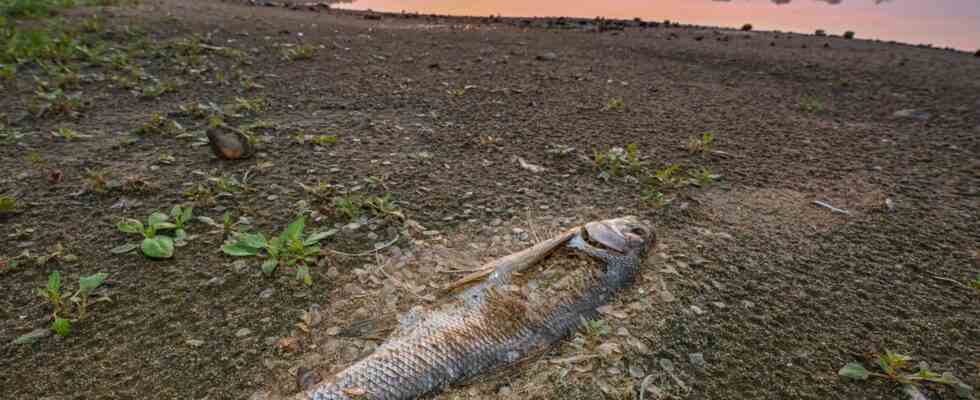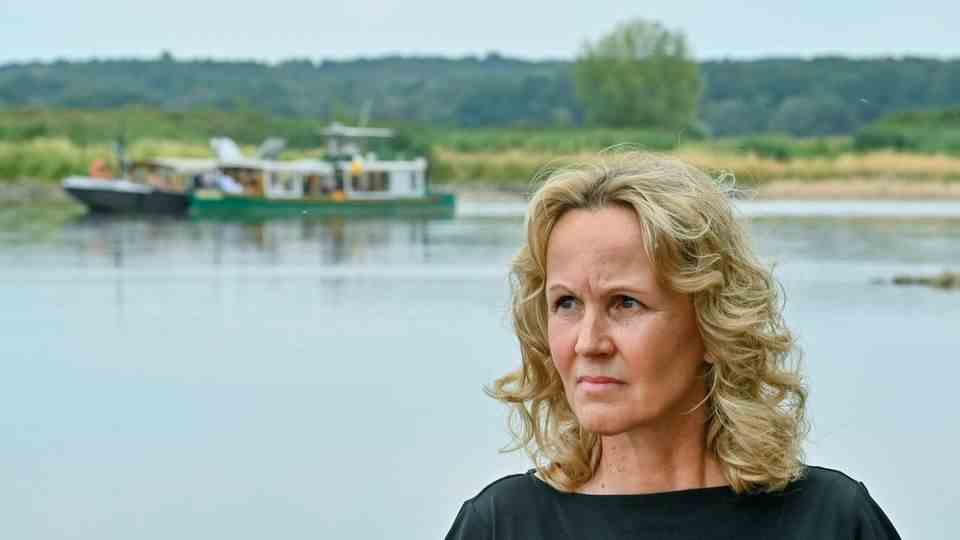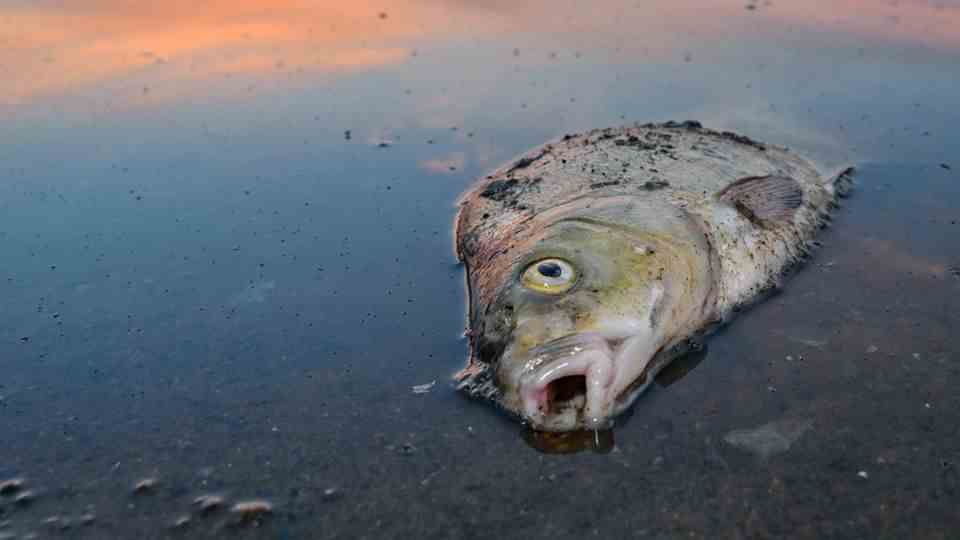FAQ
root cause analysis
What led to the death of fish on the Oder? And what does an alga have to do with it? A search for clues
It is still not clear what caused the mass death of fish in the Oder. Theoretically, thousands of substances are possible. This is what makes the search so difficult for professionals. Now researchers at the Leibniz Institute for Freshwater Ecology and Inland Fisheries in Berlin have brought a toxic species of algae into play. This would also explain the high oxygen content of the water despite the high temperatures. Christian Wolter, freshwater expert from the Leibniz Institute for Freshwater Ecology and Inland Fisheries: “Prymesium parvum. This brackish water species is already known for causing fish kills. But we still lack proof and our colleagues are working on it now. They took water samples whether it actually formed this toxin in the Oder.” It is unclear what circumstances could have triggered the suspected algal bloom. Wolter assumes that the introduction of salts is behind it: “But it is very important in this context that it is not just a matter of a natural disaster that some alga has become rebellious there, but it is clearly the result of one Discharge, a salt discharge, apparently not an accident either, because it lasted 14 days. We are currently measuring a decrease in the salt content. And that is a relatively negligent way of handling the river.” Other experts consider the algae thesis to be possible, but do not want to rule out other causes. On the German side, the authorities are examining the water in search of the possible causative substance. The Polish authorities, on the other hand, are analyzing the fish carcasses. They are therefore investigating how the poison worked in the organism of the fish.
Why is the search for the cause of the great fish kill in the Oder so complicated? The culprit is difficult to identify. It now seems clear that a toxic species of algae could be the key.
More than a week after the mass death of fish in the Oder became known, the cause of the biggest environmental disaster in Brandenburg for decades is still unclear. The State Office for the Environment and research institutes are investigating water and fish at high pressure. Authorities and scientists no longer grope in the dark. There are now various explanations for the death of the many fish.
Algae as a cause of fish kills?
A toxic species of algae could be a key factor in fish kills, scientists say. A researcher at Berlin’s Leibniz Institute for Freshwater Ecology and Inland Fisheries identified the toxic species as a microalgae named Prymnesium parvum. According to the water ecologist Christian Wolter, it is known for occasionally leading to fish deaths. This is also confirmed by Jörg Oehlmann, head of the Aquatic Ecotoxicology department at the Goethe University in Frankfurt. However, it has not yet been proven that the alga’s poison is the reason for the fish die-off, only their mass development has been proven.
Why is there suddenly so much algae in the Oder?
According to the researchers, the algae species Prymnesium parvum actually only occurs in brackish water. It requires increased salinity, which does not normally exist on the affected Oder stretch. At the official measuring station of the State Office for the Environment in Frankfurt an der Oder, however, massively increased, unnatural salt loads were measured for around two weeks, which the researchers say must have their origin upstream. According to the scientists, the mass growth of the algae also caused significantly increased measured values for oxygen, pH and chlorophyll. There are many barrages in the upper part of the Oder. Due to the low water there is currently hardly any water exchange there.
What other environmental influences are possible?
Climate change is stressing the sensitive ecosystem. For the researchers at the Leibniz Institute for Freshwater Ecology and Inland Fisheries in Berlin, several harmful factors come together: periods of drought and levels that are far too low, low oxygen levels and far too high water temperatures increase the risk of environmental disasters as “man-made” problems, they say. At low tide, for example, harmful substances would be transported in a much smaller volume of water. This extreme condition stresses the fish. If other hazards such as toxic algal blooms or chemical contamination are added to the existing pollution, the entire ecosystem in water bodies can be destroyed, says researcher Jörg Oehlmann.
What makes investigating the cause so difficult?
The Berlin-Brandenburg State Laboratory (LLBB) continues to examine water samples from different days and measuring points as well as fish. According to the Brandenburg Environment Ministry, the search for the cause of the fish kill is also difficult because there is no information from the Polish side, for example on possible discharges or specific reasons for the environmental disaster. Researchers say that research into the causes of the disaster by analyzing the substances in the Oder is a real Sisyphean task, since around 350,000 substances could potentially be present in a water sample – and even detailed diagnostics never cover them all. The investigation could take weeks, according to the ecotoxicologist Oehlmann.
First results from Poland
Poland’s Environment Minister Anna Moskwa announced on Thursday evening that toxic algae had been discovered in water samples. These are so-called golden algae, which are deadly for fish and mussels. Initially, the Polish Ministry of the Environment and the responsible institute could not find out whether it was Prymnesium parvum.
Search for those responsible
The Polish government assumes an environmental sinner. “It is likely that a huge amount of chemical waste was dumped into the river, and that with full knowledge of the risks and consequences,” Prime Minister Mateusz Morawiecki said last Friday (12 August). The Polish police have offered a reward of the equivalent of 210,000 euros for information on the perpetrator. The public prosecutor’s office has now heard more than 200 witnesses and completed twelve on-site visits on the Oder – so far there has not been a hot lead.
industry in sight
Investigators are also currently checking industrial plants located near the river. In the days after the first indications of the fish kill, a paper mill in Olawa, Lower Silesia, south of Wrocław, was blamed on social media in Poland. The company denies. The plant had “neither anything to do with the environmental catastrophe on the Oder nor contributed in any way to it,” it said in a statement last week.
Experts such as chemistry professor Marcin Drag from the University of Applied Sciences in Wroclaw (Breslau) suspect that the river was contaminated with discharges from Silesian mining due to the high salt content. According to opposition MP Piotr Borys, a state-owned mining company regularly discharges saline wastewater from a huge retention basin near Glogow into the Oder — but it also has the approval of the water authorities to do so.



